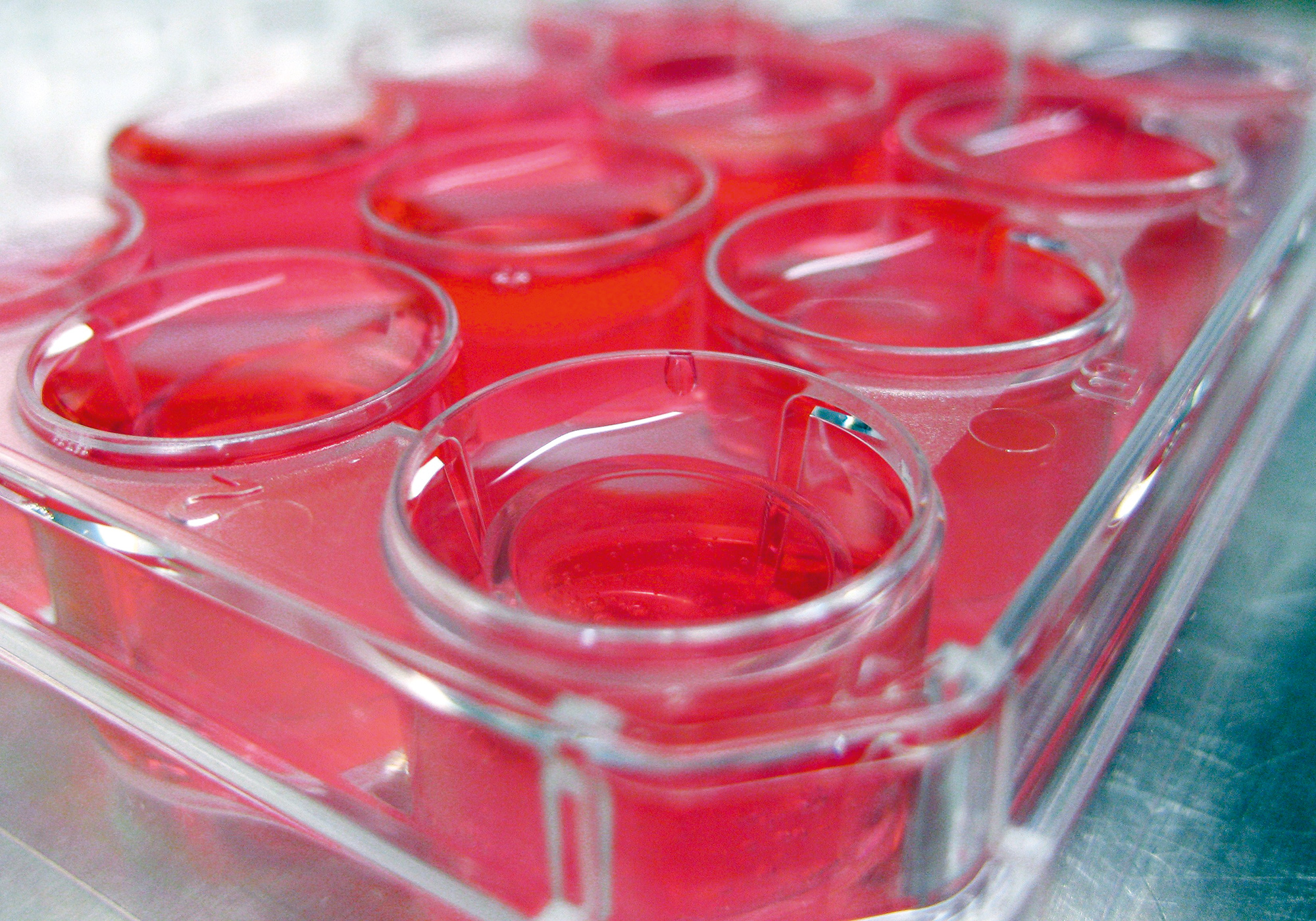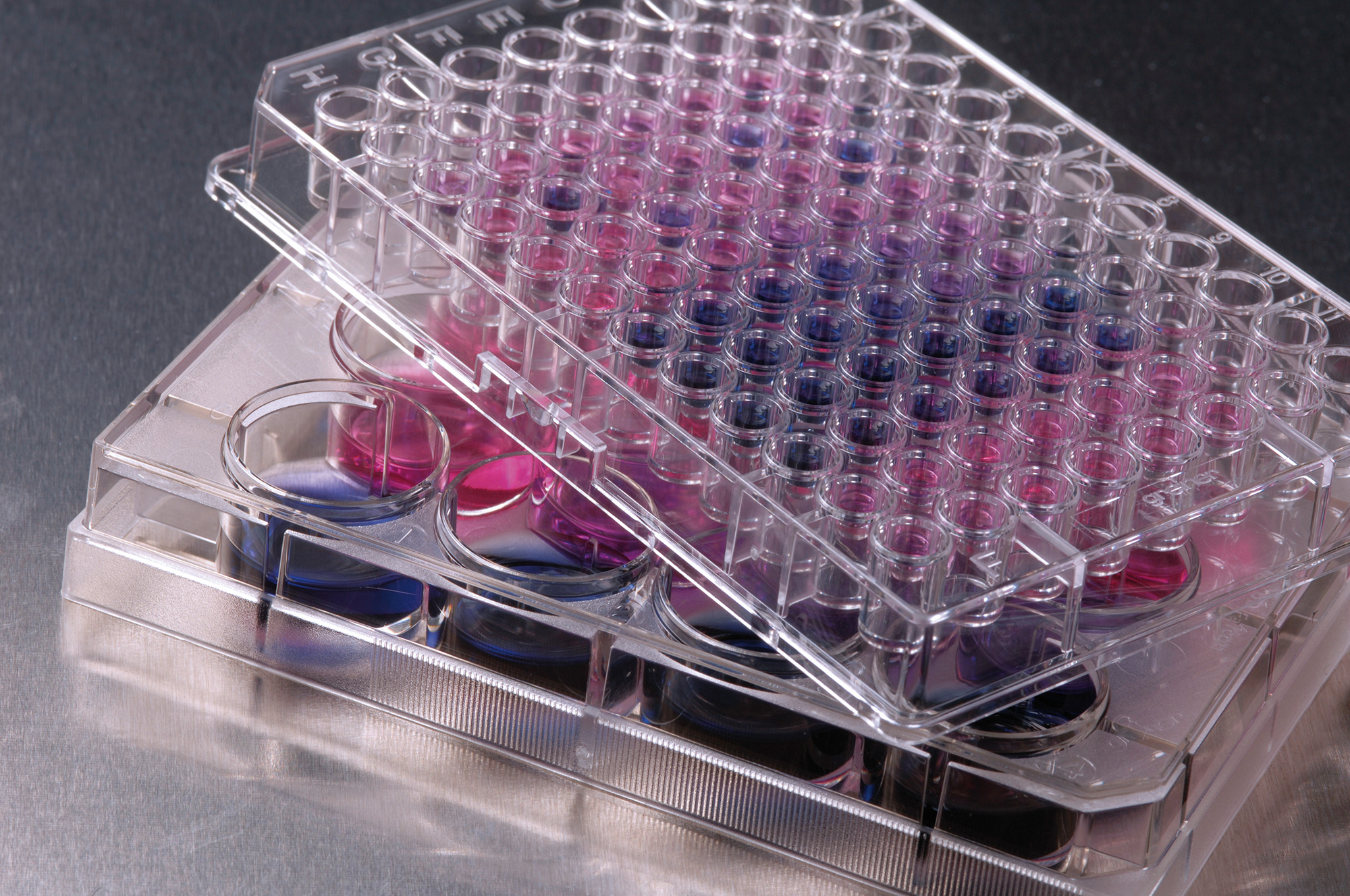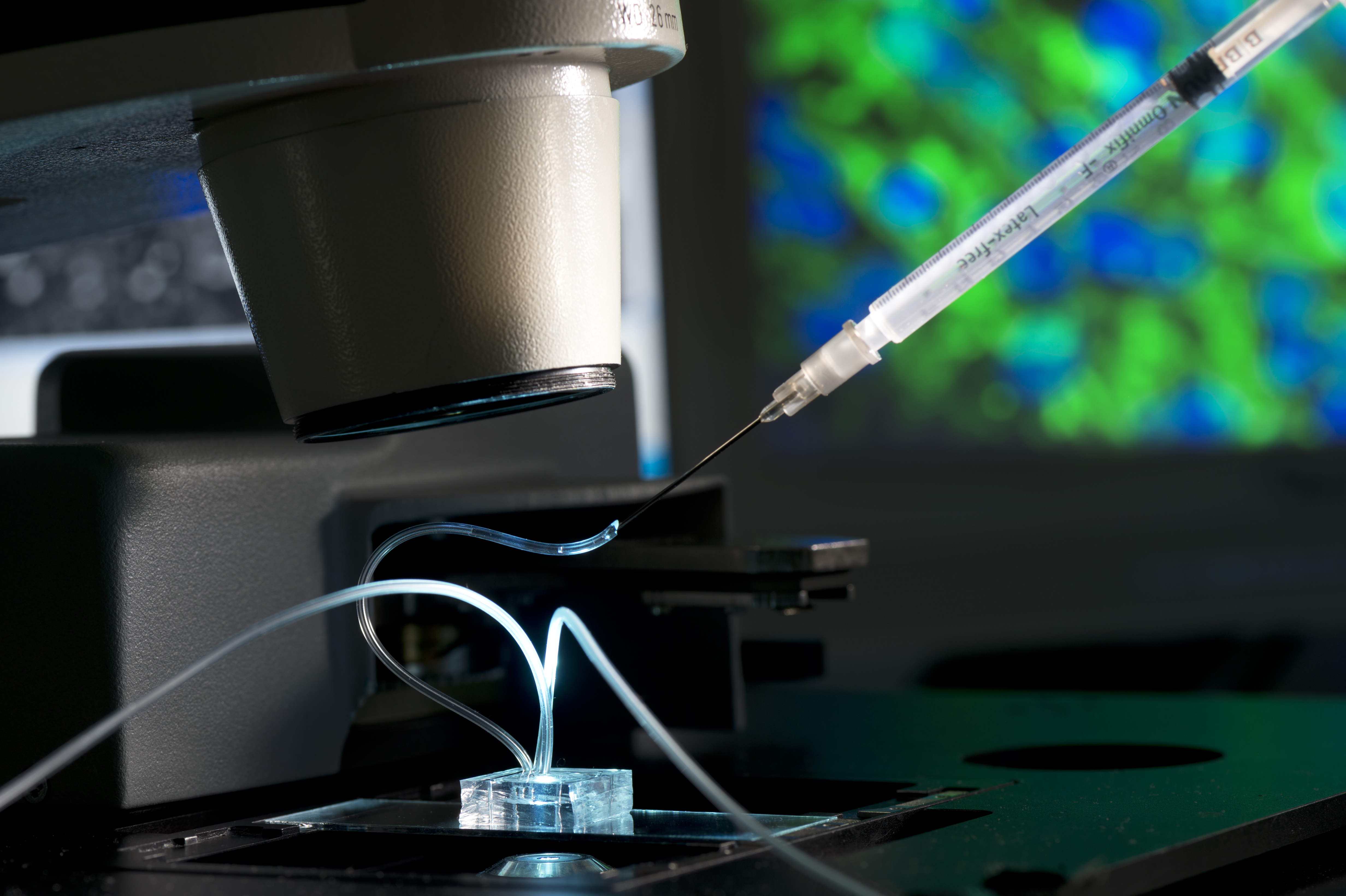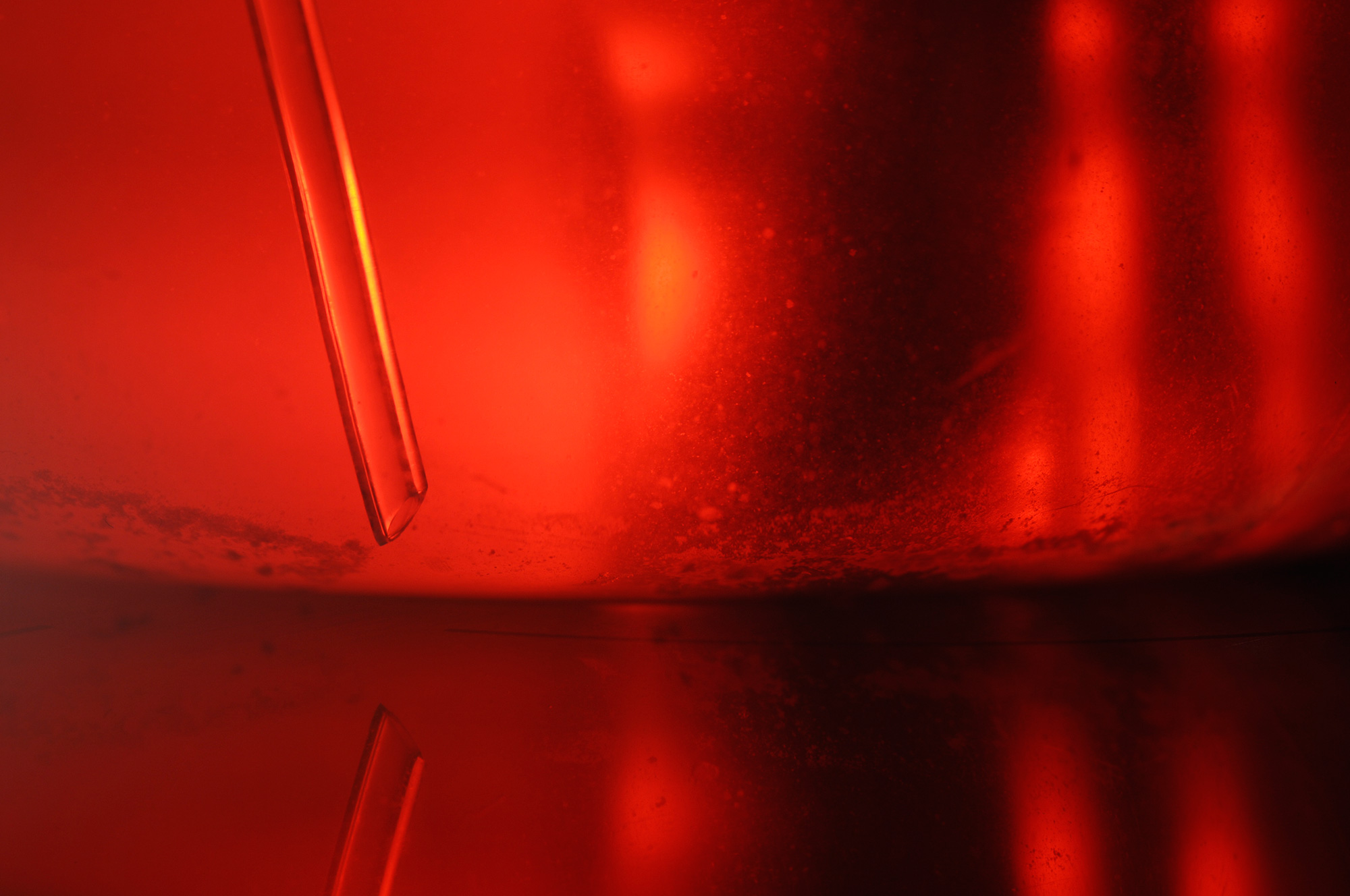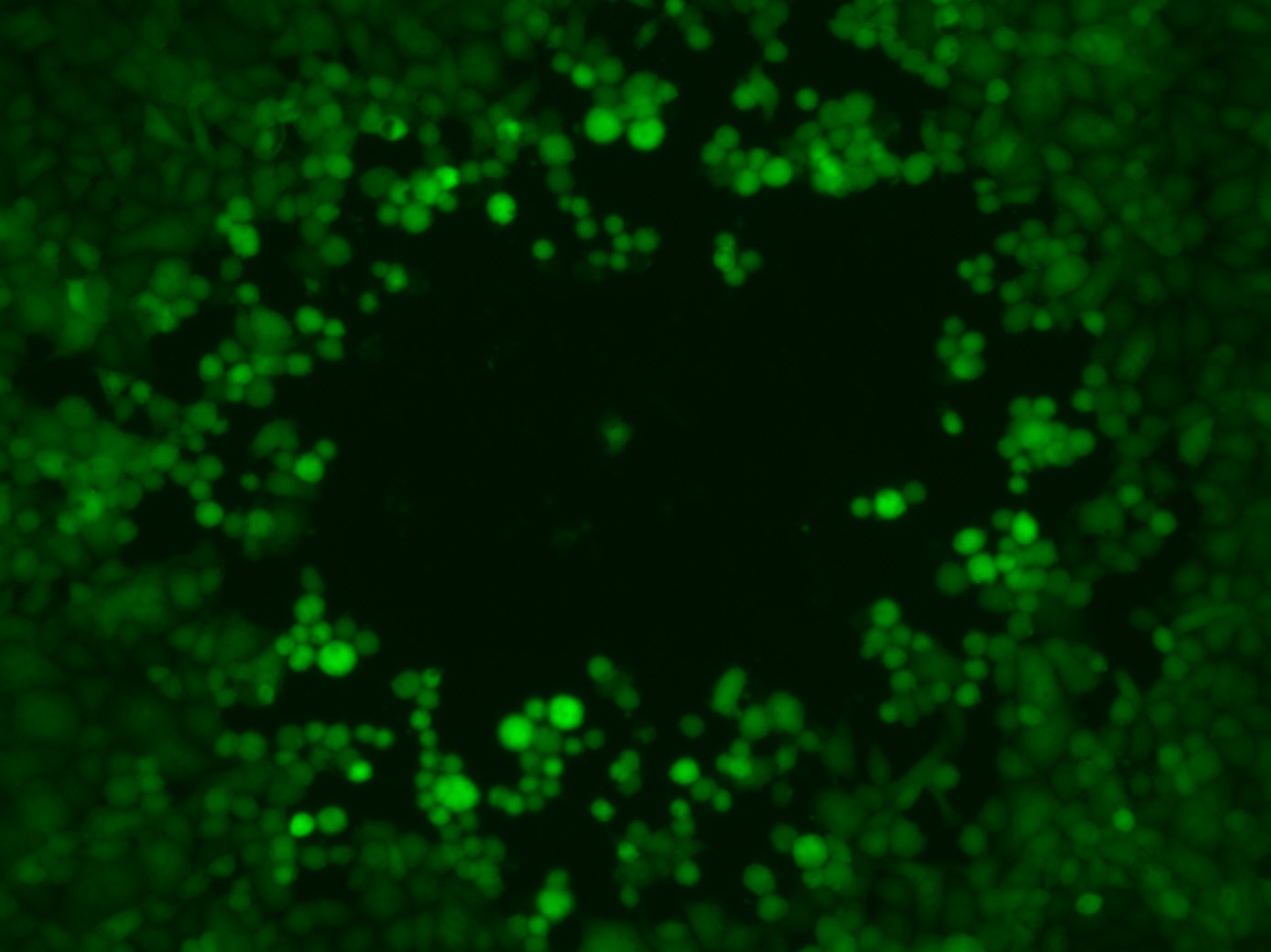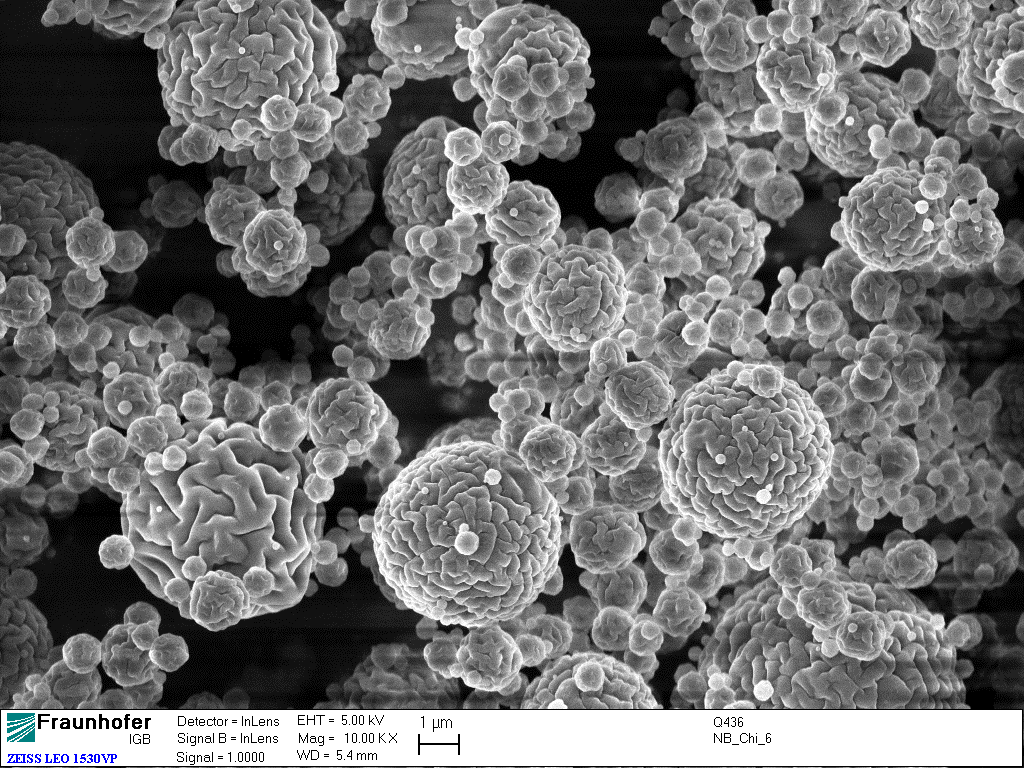In the field of drug development, we develop human-based test systems that enable evaluation of the efficacy and side effects of drug candidates at the preclinical stage of research, which cannot be identified reliably on the basis of animal testing. Examples for these test systems are organoid in-vitro systems and three-dimensional multi-cell type in-vitro models including components of the human immune system. Our wealth of experience in molecular cell technology has enabled us to develop highly precise receptor-based assays for drug validation as well as for the evaluation of personal care products. In the cosmetics industry, the need for human-based test systems is particularly high, as the EU has implemented a ban on animal experiments for the testing of new ingredients in personal care products.
New innovative therapeutic approaches are developed at the IGB using viruses. Our long-standing experience in virus engineering enables the tailor-made design of viruses for targeted prevention (vaccines) and therapy (oncolytic viruses).
For the targeted transport and controlled release of active substances (drug delivery and release), we formulate active substances, for example, in a matrix consisting of biobased, polymeric or silicate materials.
 Fraunhofer Institute for Interfacial Engineering and Biotechnology IGB
Fraunhofer Institute for Interfacial Engineering and Biotechnology IGB